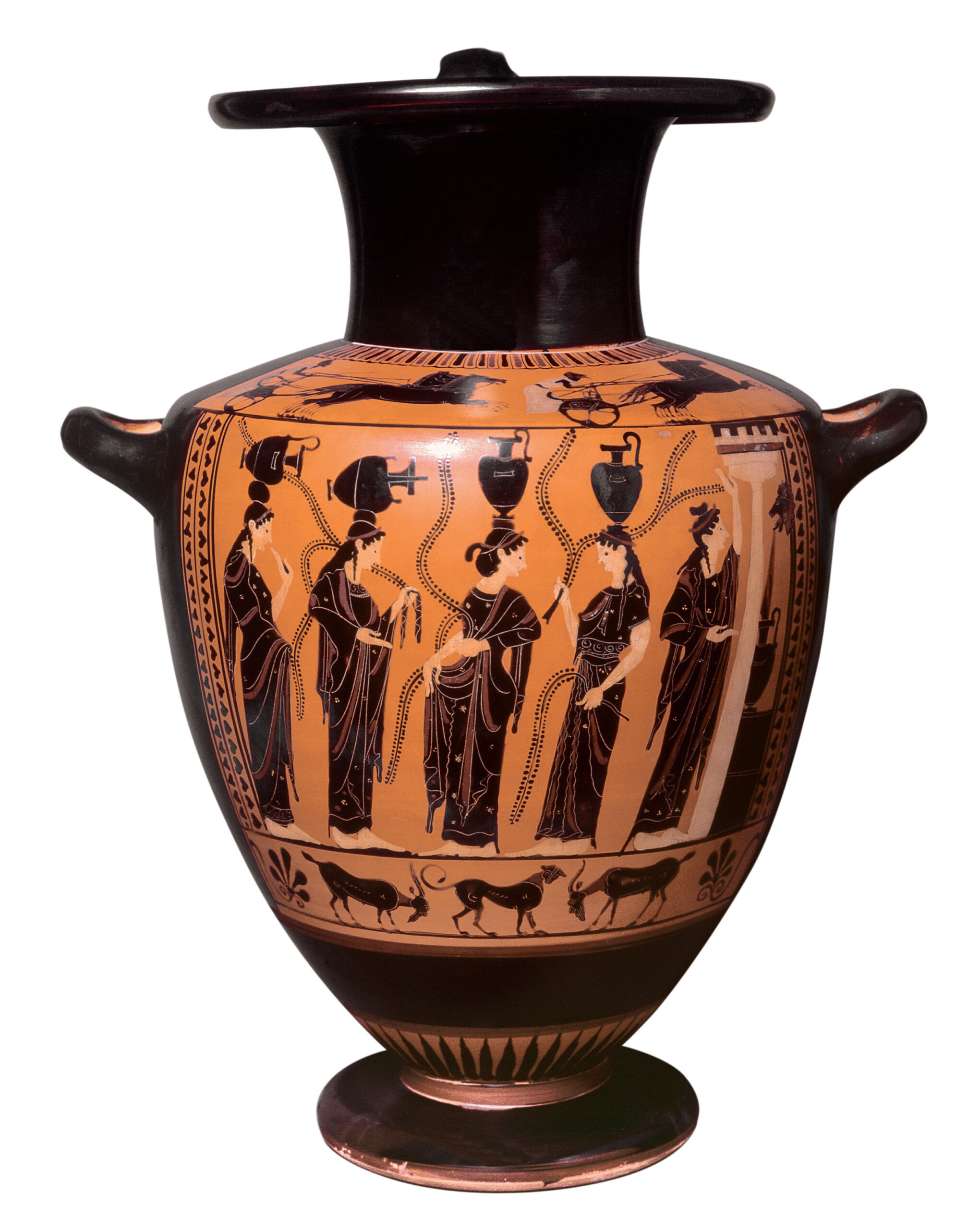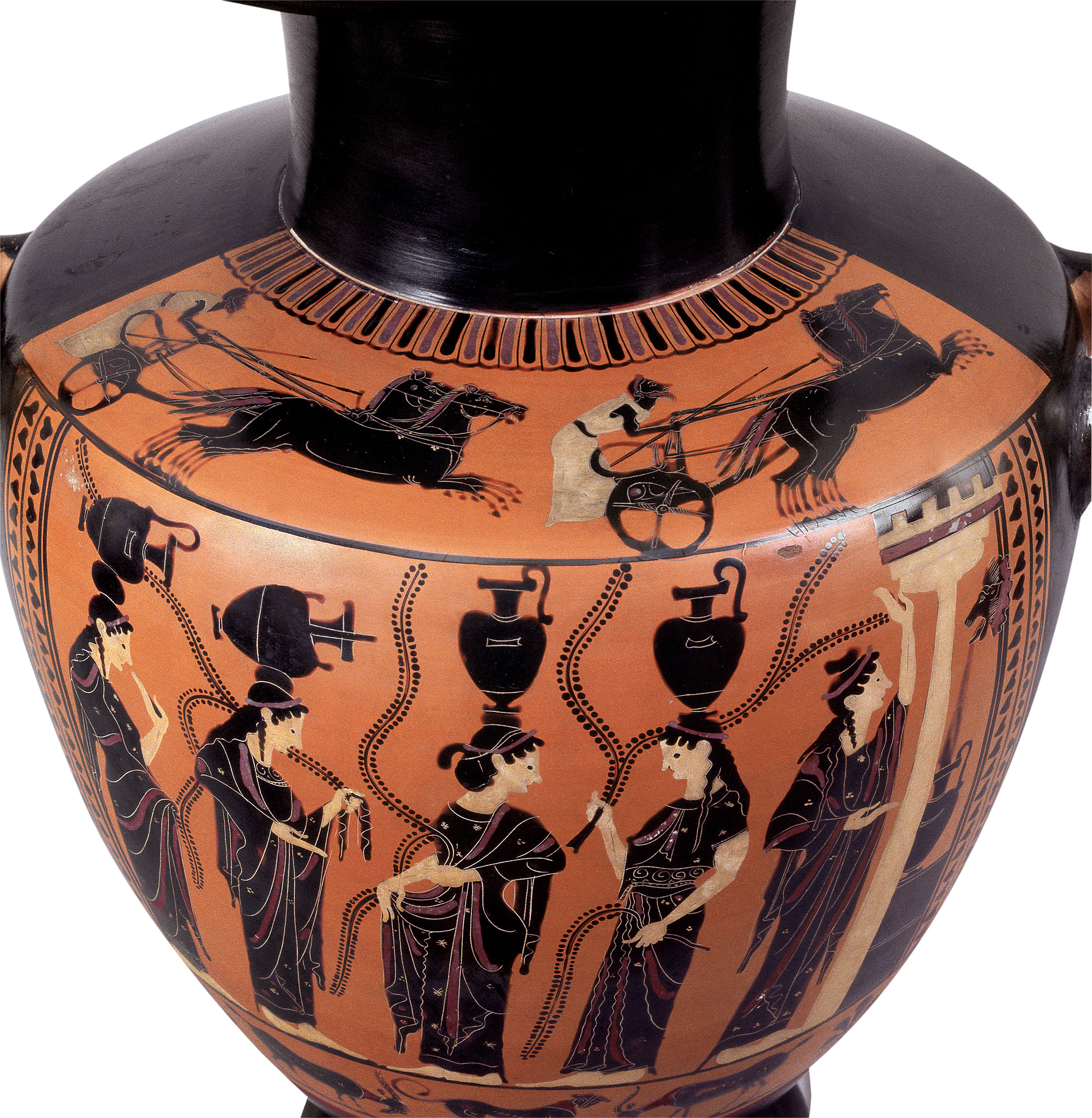



In the 6th c. BC, the tyrant Peisistratus and his sons (Peisistratids) made important infrastructure works for providing Athens with a water supply system. They constructed an aqueduct bringing water from Mt Hymettus, and built public fountains, where the Athenians could fill with fresh water their hydrias (special containers for water). The Athenians must have been impressed by the public fountains, which are frequently depicted in vases of that period.
In this black-figure hydria we see five young women in front of a fountain. The fountain is represented by a doric column with entablature and a lion-headed spout, where water pours from. A woman fills her hydria with water, while two have finished and are departing with the hydrias standing on their heads. Two others approach the spring with their hydrias empty (and thus placed sideways on their heads). Such scenes suggest that Athenian fountains were places of social interaction, especially for women.
On the shoulder of the vase, we see a chariot race. Below the fountain scene there is a decorative zone with a panther and wild goats.
PUBLICATION
– Saraga Ν. 2006. Cataloque no. 49, in Choremi-Spetsieri Α. – Zarkadas Α. (eds), The Paul and Alexandra Canellopoulos Museum. Ancient Art, Athens, 76-77.